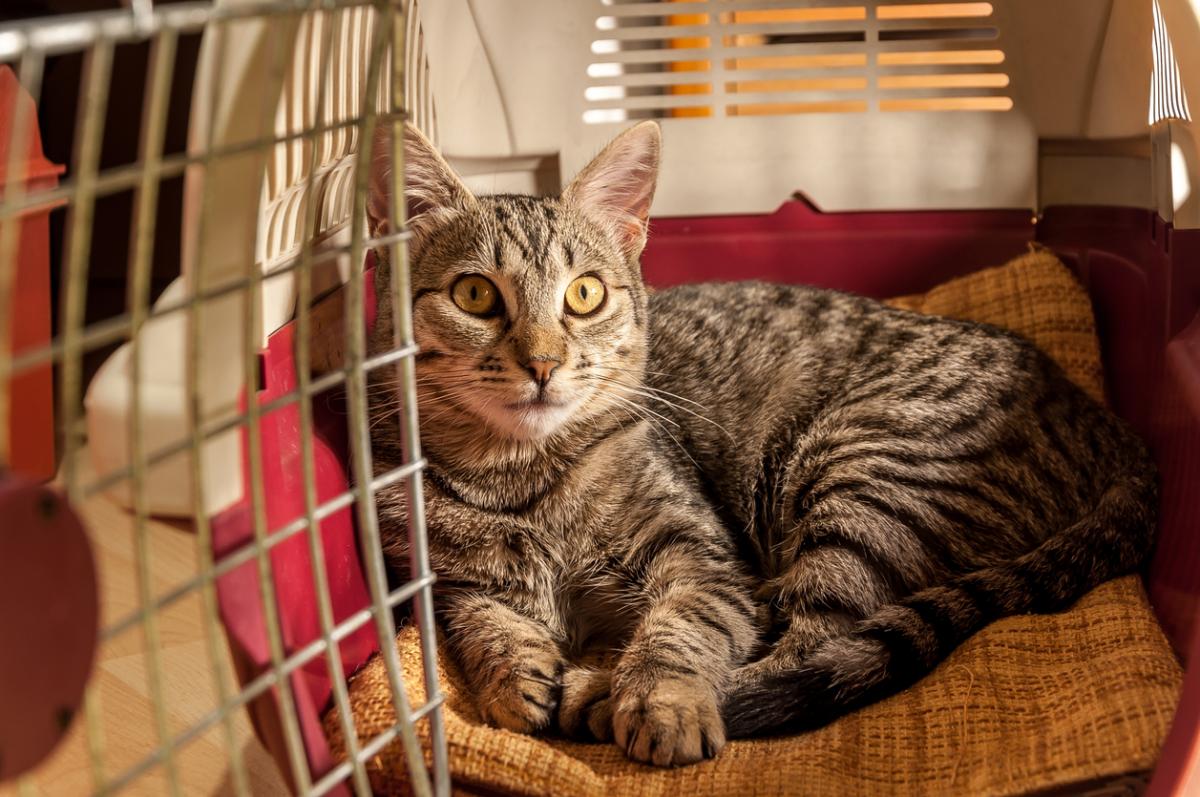
When it comes to pets, dogs are the most frequent travelers. They account for over 85% of pet travelers. Trips to the beach, family vacations, traveling to pet friendly accommodations . . . no matter what the adventure, most dogs love car rides and can’t wait to hop in and hit the open road. Cats on the other hand - not so much. Most cat’s car travel takes place when they are going back and forth to the vet (no wonder they don’t like the car). However, many cat parents are faced with a big dilemma when they have to move with their pet - particularly if the move is a long distance. They are stressed at the thought of putting terrified Fluffy in the car and traveling for hours on end. In addition, a growing number of cat parents would like to include their cat in their travels!
We’ve come up with some tips to help make your cat’s car travel experience a better one . . . for both of you!
1. Pet Carrier Training: Always use a pet travel carrier for your cat when traveling in a car. The carrier should be large enough for your cat to stand up, turn around, and lie down comfortably. Be sure the carrier has proper ventilation. Get him used to his carrier in your house. Place his bedding, some toys, or maybe some catnip or kibble in the carrier and keep the carrier door open. Let your cat go in and out of the carrier at his leisure. Do this until your cat feels comfortable.
2. Familiarity is Comfort: Cats are highly sensitive to the environment and their territory so you want to help to make the car part of their territory. Place a towel or blanket with your cat’s scent on the car seat. Put your cat in the car with you and close the doors. Let your cat explore your car, rub around and spread their scent. Do this a few times a day for a couple minutes and gradually increase the time.
3. Positive Reinforcement: Once your cat is calm in the car, start feeding him in the car for at least a week. If play or catnip motivate him more than food, then let your cat indulge in that while in the car. Again, associating the car with all things good will help make your cat a better traveler.
4. Introduce Carrier in Car: Gradually your cat will begin to accept the car as his territory. When he’s at this point, it’s time to introduce the travel carrier into the car (so be sure you are simultaneously crate training him). Put your cat in the carrier and place the carrier in the back seat or cargo area inside your vehicle. Be sure the carrier is secure and away from airbags. Turn on the engine and that’s it. Don’t drive anywhere. Let your cat get used to the noise of the engine and the vibration. Do this at least 3 times a day until your cat gets used to it. Reward your cat as soon as he is let out of his carrier.
5. Short Rides: Once your cat is used to the car and engine, it’s time to move. Back up to the end of the driveway and drive up it again. Do this a few times then take your cat out of the car and into the house. Reward him with play time and treats once you let him out of his crate. When you feel your cat is ready, extend your trip and drive around the block. Slowly, increase the length and duration of your car rides. Again, the key is to do this very gradually and reward your cat after each step. Your cat will let you know if he’s not comfortable with the speed of this “car training.”
6. Calm Energy: Throughout the entire process, it’s important for you to be calm. Pets sense your energy. So, when you’re hyped up and stressed, they will be too.
7. Potty Breaks: If you’re traveling a long distance, you’ll need to consider the issue of potty breaks for your cat. Some cat parents have harness trained their cat. This allows them to walk their cats at rest areas along the way. Some cat parents place a litter box in their cargo area of their vehicle to allow their cat to potty during rest stops. Otherwise, it is recommended that you keep your drive time down to 8 hours at most. At that point allow your cat to have a potty break at your night’s destination. You know your cat best, so this time could vary.
Whether it’s including your cat while running errands around town or traveling long distance, making him happy in the car is essential. Helping your cat become more comfortable traveling in a car definitely takes some time and a lot of patience. Stick with it and take your time...remember, it’s a gradual process that should not be rushed. Safe and happy travels with your cat!
Be sure to check out our Moving Guide for Pets for more helpful info!